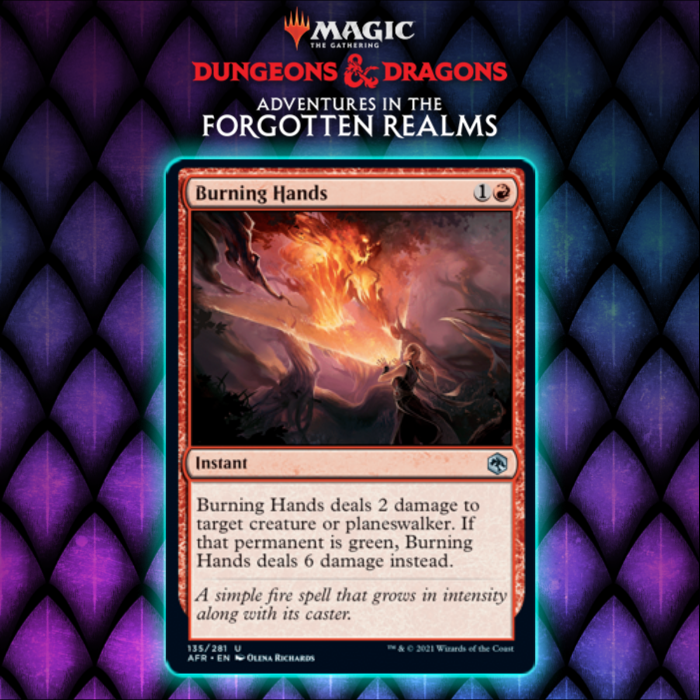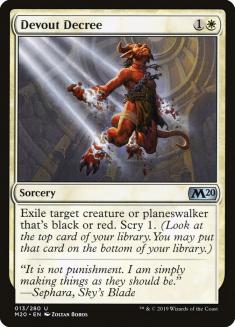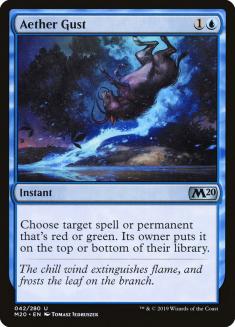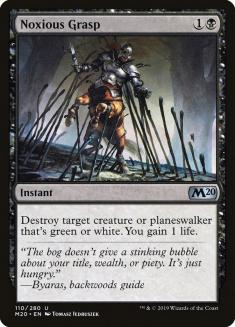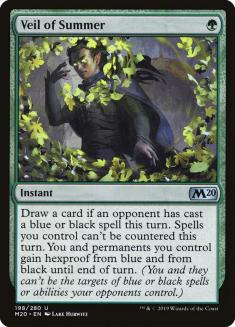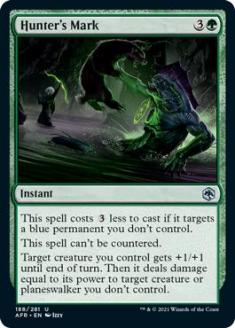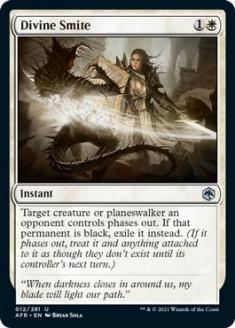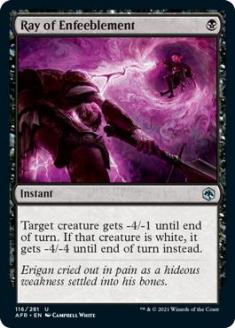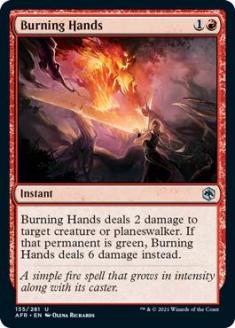Color hosers are among the most iconic cards in Magic. From Red and Blue Elemental Blast in Alpha to more recent standouts like Aether Gust, they’re always strong choices for sideboards. But because they play such a specific role, they’re often difficult to evaluate.
When the metagame is broken like the days of Oko, Thief of Crowns, maindecking Aether Gust or Noxious Grasp was commonplace, but taking advantage of skewed metagames is the easy part. The tough part is knowing when you can afford to devote a lot of sideboard space to cards that are only effective in a narrow range of matchups.
If you overload on them then you run the risk of having a bunch of wasted sideboard space if you don’t get the right matchups. But if you don’t play them at all out of fear, you don’t give yourself the chance to have the most powerful deck possible.
Looking back at the dual color hosers from Core Set 2020, you can see that these were particularly powerful because by virtue of hitting two colors, they weren’t nearly as narrow as most color hosers. There are only sixteen color combinations that contain any given color, but there are 24 that contain one of any given pair of colors. That’s a 50% increase in a card’s range — a significant increase.
Thus, the risk of not pairing into matchups where those cards were relevant was much lower, while the reward was quite high since the effects were pushed for their mana cost. It’s no surprise that these were staples of the format during their time in Standard, and have made their way into older formats as well.
The latest set of color hosers, this time from Adventures in the Forgotten Realms, takes a new approach toward mitigating the risk associated with these cards. They all target only a single color, but they do so for an enhanced effect, while the baseline effect of each card is what you get against all other colors.
Leaving some effect on the card against its non-targeted colors pushes these into a much more gray area. And it’s the gray areas where Magic is interesting.
So where the Core Set 2020 cycle mitigated the risk by making you more likely to realize each card’s upside when playing them, this cycle makes it less likely that you’ll realize their downside. Neither option is necessarily worse than the other, but it does make the process of evaluating them different, the key difference being that this cycle has more potential to be used in maindecks even in open metagames.
Evaluating sideboard cards is largely about finding the cards with the highest upside, where color hosers typically exist, but for maindeck cards it’s much more about the worst case scenario for a card, so for this cycle the baseline case is very important. The ones with the best first mode will have the most chance at maindeck play, while the others will be relegated to sideboards like past color hosers. And since these cards only target a single color, it’s hard to play too many of them since their application will be quite narrow in most metagames.
Under this lens, and also taking into account the current state of the Standard metagame, here are my rankings of the four cards in this cycle that were previewed as of my writing this article:
4. Hunter’s Mark
Quite easily the weakest of the four, I don’t expect Hunter’s Mark to see any play during its life in Standard. Mana efficiency is key in that format, and I have no interest in putting a glorified Hunt the Weak into my deck. With the weakest base case, we’re forced to evaluate the card as a strict color hoser, and on that basis it continues to fall short.
Blue is generally the color with the fewest targets for a spell like this, since it’s the least creature-centric color. There could be some good blue planeswalkers like Mordenkainen that you want to target but even then, green should be the best color at attacking planeswalkers. For Hunter’s Mark to take down a planeswalker, you have to have a creature that is nearly big enough to do so in combat anyway. So it’s really only needed when your opponent lands a key planeswalker and you need to fight through blockers to answer it. Against blue, that’s not a common scenario.
Lastly, there’s the uncounterable clause. This is a flashy ability to put on a spell, since it offers a feeling of comfort knowing that your opponent has less of a chance of stopping your plans, but on this effect it isn’t nearly as powerful because removing the creature in response, say with a removal or bounce spell, will work just as well. Given that you’re playing a green deck with many creatures, it’s also likely that your opponent wants to side down on counterspells for more interaction that’s relevant against the battlefield.
An aggressive blue deck could emerge where this becomes a solid sideboard card, but I wouldn’t count on it. And as is, there’s not much to like here.
3. Divine Smite
Next up is the white member of the cycle, Divine Smite. Unfortunately, like Hunter’s Mark, the base mode of Divine Smite is too weak to see play, even with the potential upside from the upgraded mode. Phasing out an opposing threat is rarely worth a full card, even when used at instant-speed. So like Hunter’s Mark, Divine Smite has to be evaluated as a pure color hoser.
Fortunately, this card hits on that metric much better than its green counterpart. A two-mana instant-speed removal spell with that kind of versatility is already a solid card, acting as an upgraded Heartless Act or cheaper Swift End, both removal spells that have seen significant play in recent years.
Then you have the added bonus of exiling, which is particularly helpful against black decks, since they’re known for recursive threats like Skyclave Shade and Ebondeath, Dracolich. So compared to Hunter’s Mark, Divine Smite fits much better as a counter to what its target color is trying to accomplish, making it much more effective in that role.
Divine Smite should be a solid sideboard card that ebbs and flows with the metagame as black decks wax and wane in popularity. Unfortunately, the weakness of phasing means it’s highly unlikely to become anything more than that.
2. Ray of Enfeeblement
In second place is Ray of Enfeeblement, and it represents another step up since this is an excellent removal spell against white creature decks, but also potentially a solid removal spell across a range of aggressive strategies, since one-toughness creatures are pretty common. Right now in Standard we have Fervent Champion, Hall Monitor, and Rimrock Knight in most lists of Mono-Red Aggro❄, as well as Toski, Bearer of Secrets, Edgewall Innkeeper, Thieves’ Guild Enforcer, and Brazen Borrower in other decks.
And on top of acting as a removal spell, Ray of Enfeeblement can turn into a combat trick against larger creatures. It’s certainly not ideal to do so, but it’s nice to have the option against larger non-white creatures. I wouldn’t be at all surprised to see this sneak into maindecks at some point, and that’s exciting for a color hoser.
Then, as a sideboard card, it’s just about the most efficient answer to white creatures you can find. Yorion, Sky Nomad and Kenrith, the Returned King are the only commonly played Standard white creatures that this doesn’t answer, and honestly it’s a stretch to even include Kenrith since Winota decks aren’t as popular as they used to be and some Winota lists don’t include it.
Even as more large white creatures enter Standard in later sets, it’s not that important for your cheapest removal spell to answer them. This card’s purpose is to help you stay at parity in the early-game against aggression, and let you pull ahead with a good double spell turn later on. So it’s much more important for it to answer sticky threats like Seasoned Hallowblade and also be relevant against cheap creatures in other colors.
In the end, this is a reasonable maindeck card so long as non-white aggressive decks have some one-toughness creatures, there are some other targets littered in the metagame, and you can utilize it as a combat trick when it doesn’t work as as removal spell. That may seem like a lot of conditions but they’re all pretty easy to meet. And as a color hoser it becomes a removal spell with an unmatched combination of efficiency and versatility. This one is a hit.
1. Burning Hands
Honestly, this card annoys me. Red got short shrift in the Core Set 2020 with Fry, which was just short of answering Uro, Titan of Nature’s Wrath and Oko, Thief of Crowns. And even with those cards banned, red decks have been struggling to beat Lovestruck Beast and Elder Gargaroth. The Akroan War could only do so much, especially in decks without sacrifice outlets.
So here comes a card that could’ve helped red decks so much in the dark days of Simic dominance, only it’s months too late to do anything. It also cleanly answers Lovestruck Beast and Elder Gargaroth, but it comes at the last possible moment, only helping out for a couple of months before rotation eliminates the problem altogether.
Why did we have to suffer for so long? What did Mountains do to WotC?
Once I got over the insult of being offered a too late solution to a longstanding problem, I saw the immense potential in this card. It’s not as efficient as Ray of Enfeeblement, but it will hit a lot of creatures that Ray doesn’t, like Robber of the Rich and Woe Strider. And the fact that it hits planeswalkers means that it will have applications even in non-aggressive matchups. So in green-heavy metagames, you absolutely can maindeck this card and not be worried that it will cost you dearly.
And even if it’s only for two months, getting a clean answer to Lovestruck Beast and Elder Gargaroth is absolutely huge for red decks. To the point where the balance of power in the metagame will shift. After rotation, those cards will be gone, but green is never short on big creatures that try to lock up the ground against red decks, so I doubt Burning Hands will stop being useful.
In fact, with Bonecrusher Giant rotating, red decks may be looking for more removal. Not that Burning Hands will replace Bonecrusher Giant, but there will be space in these decks to play other cheap removal next to Frost Bite.
Burning Hands has the best base mode of the four cards in this cycle, and the color hoser mode is something that has been sorely needed for red decks for some time. That combination puts it ahead of Ray of Enfeeblement for me and takes the top spot on the list.
I like the space that this cycle explores when it comes to color hosers. The more black and white these kinds of cards are, the less interesting they become, because you can only maindeck them in the most skewed metagames. Leaving some effect on the card against its non-targeted colors pushes these into a much more gray area. And it’s the gray areas where Magic is interesting.
The gray areas are where we have to make judgement calls because even 100 hours of testing won’t produce a definitive answer. It’s where we can agree to disagree because no one can completely prove that they’re right. And it’s where we’re allowed to get creative because there are so many similar options. The gray area is where Magic is at its best.
So while this may not be as powerful of a cycle as those in Core Set 2020, it’s a much more interesting cycle. I’m excited to see what the blue card does, and how exactly it attacks red decks.

